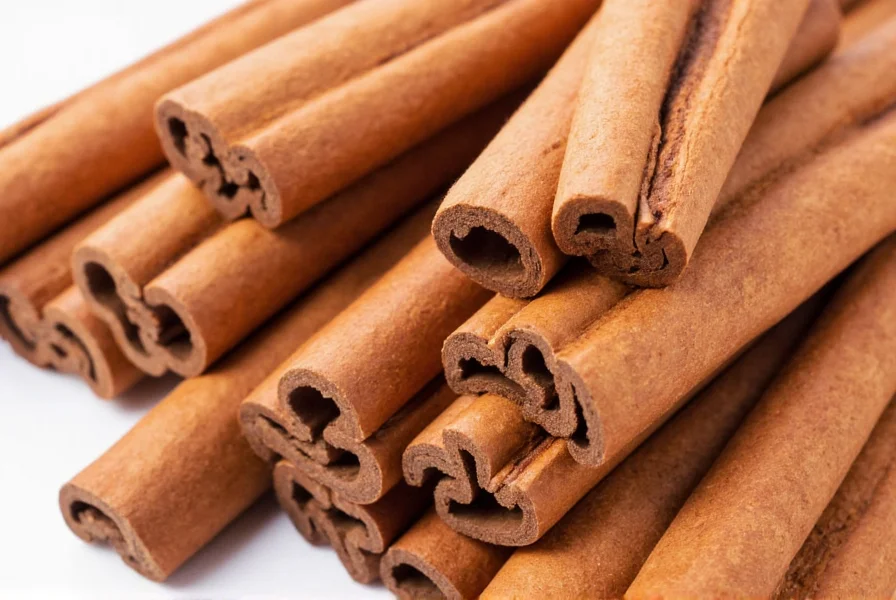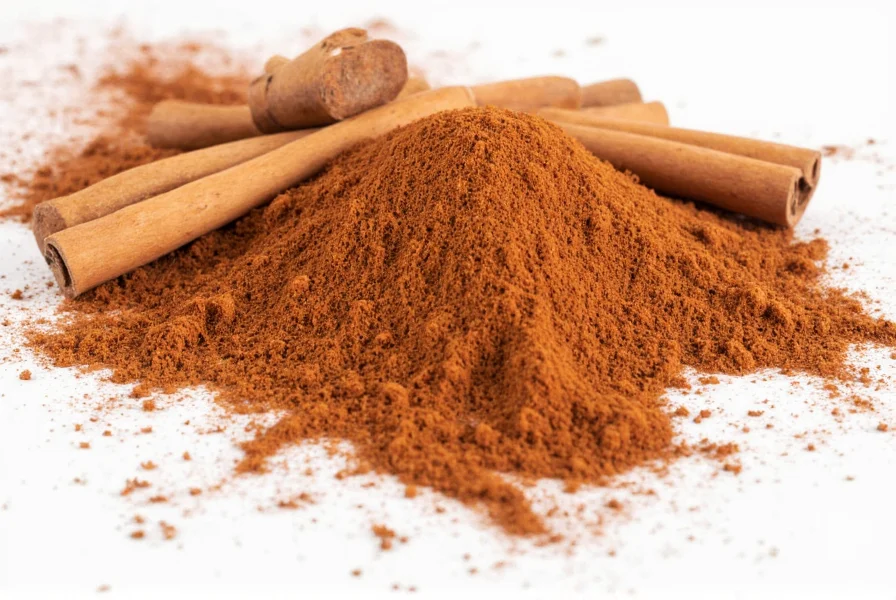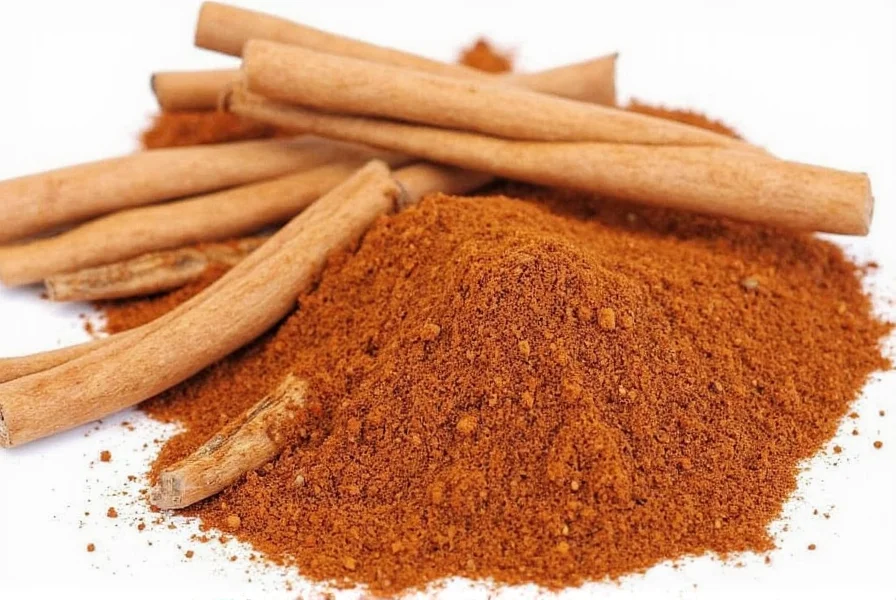Saigon cinnamon, also known as Vietnamese cinnamon or Cinnamomum loureiroi, is a premium variety of cassia cinnamon grown primarily in central Vietnam's Quang Ngai province. It contains the highest concentration of cinnamaldehyde (up to 5% more than other cassia varieties) and coumarin among all cinnamon types, delivering an intensely sweet, spicy flavor profile with distinctive notes of citrus and clove that makes it ideal for baking and spice blends.
When exploring the world of premium spices, few varieties command the attention of culinary professionals and home cooks like Saigon cinnamon. This exceptional spice, scientifically classified as Cinnamomum loureiroi, represents the pinnacle of cassia cinnamon quality with its remarkable flavor intensity and aromatic complexity. Unlike the more common Chinese cassia (Cinnamomum cassia) or the delicate Ceylon cinnamon (Cinnamomum verum), Saigon cinnamon delivers a powerful sensory experience that has made it a favorite among pastry chefs and spice connoisseurs worldwide.
Origin and Historical Significance
Saigon cinnamon takes its name from Ho Chi Minh City (formerly Saigon), though its cultivation occurs primarily in Vietnam's central highlands, particularly in Quang Ngai province. The region's unique combination of red basaltic soil, tropical climate, and traditional harvesting methods creates ideal conditions for developing cinnamon with exceptional flavor compounds. Vietnamese cinnamon production dates back centuries, with historical records indicating trade with Chinese merchants as early as the 13th century. During French colonial rule, the spice gained international recognition, eventually becoming one of Vietnam's most valuable agricultural exports.

Botanical Classification and Characteristics
Despite common misconceptions, Saigon cinnamon isn't a separate species from other cassia varieties but rather a specific cultivar of Cinnamomum loureiroi grown under optimal conditions in Vietnam. The key distinguishing features include:
| Characteristic | Saigon Cinnamon | Chinese Cassia | Ceylon Cinnamon |
|---|---|---|---|
| Bark Thickness | 6-8mm (thickest) | 4-5mm | 0.5-1mm (paper-thin) |
| Cinnamaldehyde Content | 3.5-5.0% | 2.5-3.5% | 0.5-1.5% |
| Coumarin Content | 5,000-12,000 ppm | 2,500-6,000 ppm | 50-300 ppm |
| Flavor Profile | Intensely sweet-spicy with citrus notes | Milder, more woody | Delicate, subtle sweetness |
| Quill Structure | Single thick layer, tightly rolled | Multiple thinner layers | Multiple paper-thin layers |
Flavor Profile and Culinary Applications
The distinctive flavor profile of Saigon cinnamon makes it particularly valuable in specific culinary applications. With approximately 3.5-5.0% cinnamaldehyde content—the compound responsible for cinnamon's characteristic flavor—it delivers a more intense, sweeter, and spicier experience than other varieties. Professional bakers particularly prize Saigon cinnamon from saigon for its ability to maintain flavor integrity during baking processes where other cinnamon varieties might lose their aromatic compounds.
When considering saigon cinnamon vs ceylon cinnamon for baking applications, the Vietnamese variety's higher oil content ensures better flavor retention in cookies, cakes, and pastries. Its robust profile stands up well to long cooking times in dishes like mulled wine, chai tea, and braised meats. For optimal results when using saigon cinnamon in recipes, many chefs recommend using 25-30% less than standard cinnamon measurements due to its intensity.
Quality Assessment and Authentication
Authentic Saigon cinnamon exhibits several identifying characteristics that distinguish it from inferior products. Genuine cinnamon from saigon features:
- Thick, single-layer quills (6-8mm diameter) with a deep reddish-brown color
- Visible oil glands that appear as tiny dots on the bark surface
- Strong, sweet aroma with citrus undertones when broken
- High oil content that leaves a slightly greasy residue on fingers
- Intense, lingering heat that builds gradually on the palate
Unfortunately, the market contains many mislabeled products. When searching for where to buy authentic saigon cinnamon, look for suppliers who provide specific origin information (Quang Ngai province preferred), harvest dates, and coumarin content testing. Reputable vendors often sell Saigon cinnamon in whole quill form rather than powder, as this makes adulteration more difficult.

Health Considerations and Usage Guidelines
While saigon cinnamon health benefits include potent antioxidant properties and potential blood sugar regulation effects, its high coumarin content requires mindful consumption. Coumarin, a naturally occurring compound, can cause liver toxicity in sensitive individuals when consumed in large quantities over time. The European Food Safety Authority recommends a maximum daily intake of 0.1 mg coumarin per kilogram of body weight.
For an average 70kg adult, this translates to approximately 1.5 grams (about 1 teaspoon) of Saigon cinnamon daily. Those using cinnamon supplements or consuming large quantities regularly should consider switching to Ceylon cinnamon, which contains significantly less coumarin. When exploring saigon cinnamon vs ceylon cinnamon for daily consumption, this health consideration becomes particularly relevant.
Storage and Shelf Life
To preserve the exceptional flavor of Saigon cinnamon, proper storage is essential. The high oil content that gives this variety its distinctive characteristics also makes it more susceptible to degradation. Store whole quills in an airtight container away from light and heat sources. Properly stored, Saigon cinnamon maintains peak flavor for 18-24 months, compared to 12-18 months for Chinese cassia and 6-12 months for Ceylon.
For maximum flavor impact in recipes requiring saigon cinnamon in baking applications, toast the whole quills in a dry skillet for 1-2 minutes before grinding. This simple technique releases additional aromatic compounds, enhancing the already impressive saigon cinnamon flavor profile.
Conclusion
Saigon cinnamon represents the most intense and flavorful expression of cassia cinnamon available to cooks and bakers. Its unique combination of high cinnamaldehyde content, distinctive citrus notes, and robust structure make it particularly valuable for specific culinary applications where flavor intensity matters. While its high coumarin content requires mindful consumption, understanding how to properly select, store, and use this premium spice allows culinary enthusiasts to harness its exceptional qualities safely. Whether you're exploring saigon cinnamon vs ceylon cinnamon for baking or seeking the most authentic vietnamese cinnamon characteristics, this remarkable spice offers a sensory experience unmatched by other varieties.
Frequently Asked Questions
Is Saigon cinnamon the same as Vietnamese cinnamon?
Yes, Saigon cinnamon and Vietnamese cinnamon refer to the same variety (Cinnamomum loureiroi) grown primarily in central Vietnam. The name "Saigon" comes from Ho Chi Minh City, though most production occurs in Quang Ngai province. This premium cassia variety contains higher concentrations of flavor compounds than other cinnamon types.
How does Saigon cinnamon differ from regular cinnamon?
Saigon cinnamon differs from regular cinnamon (typically Chinese cassia) in several key ways: it has thicker bark (6-8mm vs 4-5mm), higher cinnamaldehyde content (3.5-5.0% vs 2.5-3.5%), more intense sweet-spicy flavor with citrus notes, and higher coumarin levels. The quills form as a single thick layer rather than multiple thinner layers found in Chinese cassia.
Can I substitute Saigon cinnamon for Ceylon cinnamon in recipes?
Yes, but with important adjustments. Due to Saigon cinnamon's more intense flavor (3-4 times stronger than Ceylon), use only 25-30% of the amount called for in recipes. For baking applications where saigon cinnamon vs ceylon cinnamon matters, this substitution works well for robust recipes like gingerbread or spice cakes, but may overwhelm delicate dishes where Ceylon's subtlety is preferred.
Why is Saigon cinnamon more expensive than other cinnamon varieties?
Saigon cinnamon commands higher prices due to several factors: limited growing region in Vietnam's central highlands, labor-intensive harvesting methods, higher concentration of desirable flavor compounds, and increasing global demand from professional kitchens. The production process requires skilled workers to hand-peel the thick bark during a narrow seasonal window, contributing to its premium status among cinnamon from saigon varieties.
How can I verify I'm buying authentic Saigon cinnamon?
To verify authentic Saigon cinnamon, look for these characteristics: thick single-layer quills (6-8mm diameter), deep reddish-brown color, visible oil glands, strong sweet-citrus aroma, and high oil content that leaves residue on fingers. Reputable suppliers provide specific origin information (Quang Ngai province preferred), harvest dates, and coumarin content testing. Whole quills are less likely to be adulterated than pre-ground powder when searching for where to buy authentic saigon cinnamon.











 浙公网安备
33010002000092号
浙公网安备
33010002000092号 浙B2-20120091-4
浙B2-20120091-4